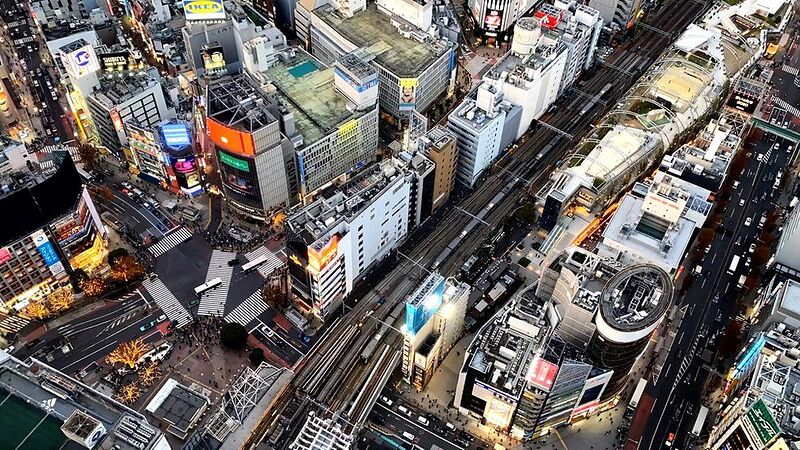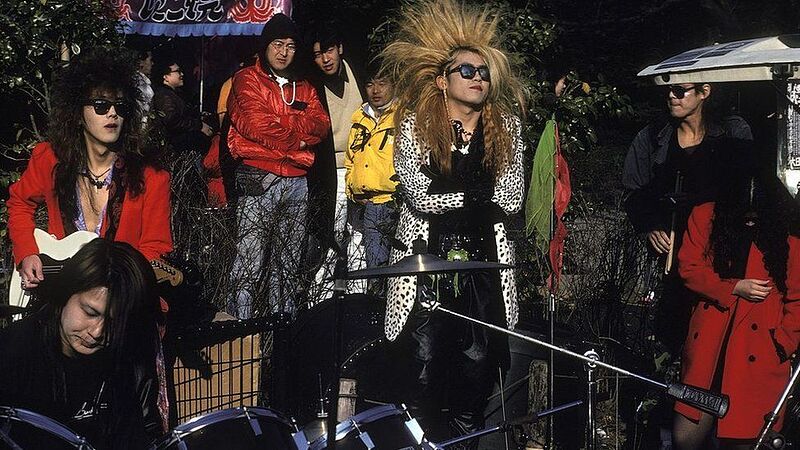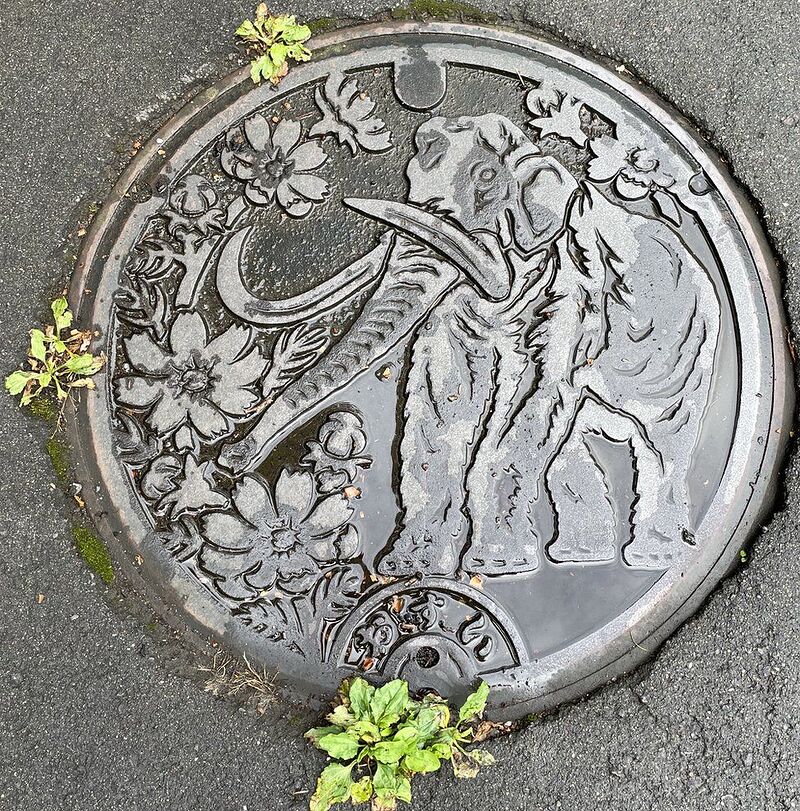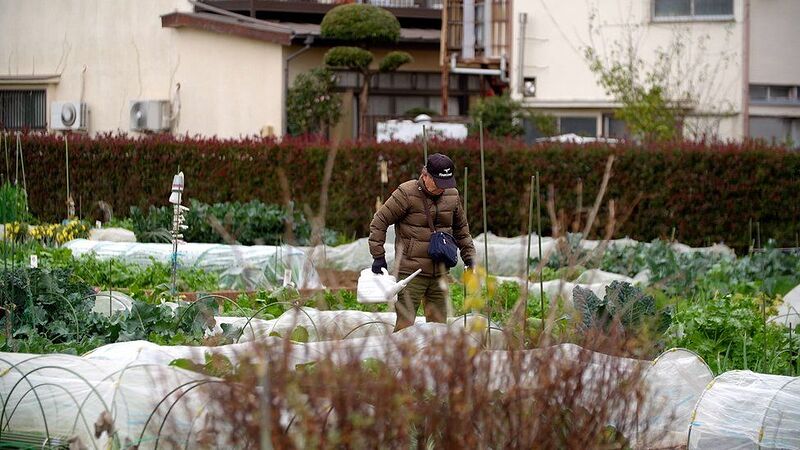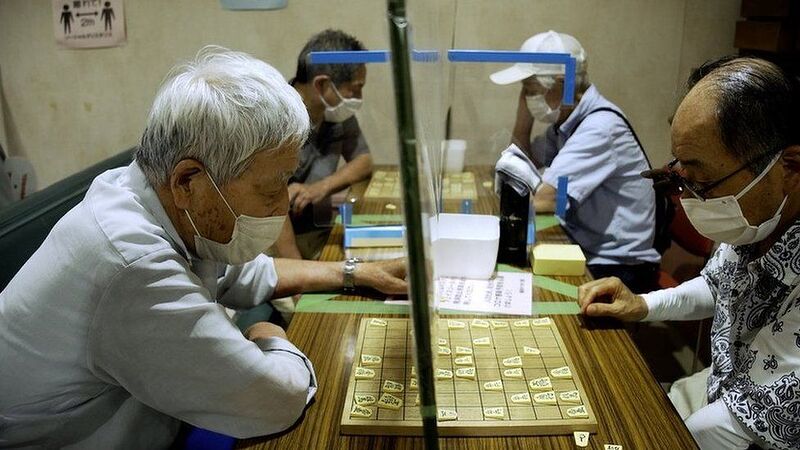Image caption, Japan’s economy, the world’s third-largest, has been stagnant for years
In Japan, houses are like cars.
As soon as you move in, your new home is worth less than what you paid for it and after you’ve finished paying off your mortgage in 40 years, it is worth almost nothing.
It bewildered me when I first moved here as a correspondent for the BBC - 10 years on, as I prepared to leave, it was still the same.
This is the world’s third-largest economy. It’s a peaceful, prosperous country with the longest life expectancy in the world, the lowest murder rate, little political conflict, a powerful passport, and the sublime Shinkansen, the world’s best high-speed rail network.
America and Europe once feared the Japanese economic juggernaut much the same way they fear China’s growing economic might today. But the Japan the world expected never arrived. In the late 1980s, Japanese people were richer than Americans. Now they earn less than Britons.
For decades Japan has been struggling with a sluggish economy, held back by a deep resistance to change and a stubborn attachment to the past. Now, its population is both ageing and shrinking.
Japan is stuck.
The future was here
When I arrived in Japan for the first time in 1993, it wasn’t the neon-lit streets of Ginza and Shinjuku that struck me - nor the wild “Ganguro” fashion of the “Harajuku” girls.
It was how much richer Japan felt than anywhere else I’d been in Asia; how exquisitely clean and orderly Tokyo was compared to any other Asian city. Hong Kong was an assault on the senses, noisy, smelly, a city of extremes - from gaudy mansions on Victoria Peak to the “dark satanic” sweatshops at the north end of Kowloon.
In Taipei, where I was studying Chinese, the streets thronged to the sound of two-stroke scooters spewing acrid smoke that enveloped the city in a blanket of smog so thick you could often see barely two blocks.
If Hong Kong and Taipei were Asia’s raucous teenagers, Japan was the grown-up. Yes, Tokyo was a concrete jungle, but it was a beautifully manicured one.
IMAGE SOURCE,GETTY IMAGESImage caption,
Tokyo’s Harajuku district has long been a magnet for subcultures and alternative fashion
In front of the Imperial Palace in Tokyo, the skyline was dominated by the glass towers of the country’s corporate titans - Mitsubishi, Mitsui, Hitachi, Sony. From New York to Sydney, ambitious parents were imploring their offspring to “learn Japanese”. I had wondered whether I’d made a mistake plumping for Chinese.
Japan had emerged from the destruction of World War Two and conquered global manufacturing. The money poured back into the country, driving a property boom where people bought anything they could get their hands on, even chunks of forest. By the mid-1980s, the joke was that the grounds of the imperial palace in Tokyo were worth the same as all of California. The Japanese call it the “Baburu Jidai” or the bubble era.
Then in 1991 the bubble burst. The Tokyo stock market collapsed. Property prices fell off a cliff. They are yet to recover.
A friend was recently negotiating to buy several hectares of forest. The owner wanted $20 per square metre. “I told him forest land is only worth $2 a square metre,” my friend said. “But he insisted he needed $20 a square metre, because that’s what he’d paid for it in the 1970s.”
Think of Japan’s sleek bullet trains, or Toyota’s “just-in-time” marvel of assembly-line manufacturing - and you could be forgiven for thinking Japan is a poster child for efficiency. It is not.
Rather the bureaucracy can be terrifying, while huge amounts of public money are spent on activities of dubious utility.
Last year, I discovered the story behind the stunning manhole covers in a little town in the Japanese Alps. In 1924, the fossilised bones of an ancient elephant species were found in the nearby lake. It became a symbol of the town - and a few years ago, someone decided to have all the manhole covers replaced with new ones that would have an image of the famous elephant cast in the top.
This has been happening all over Japan. There is now a Japan Society for Manhole Covers that claims there are 6,000 different designs. I understand why people love the covers. They are works of art. But each one costs up to $900.
Image caption,
These stunning manhole covers can be seen all over Japan
It’s a clue to how Japan has ended up with the world’s largest mountain of public debt. And the ballooning bill isn’t helped by an ageing population that cannot retire because of the pressure on healthcare and pensions.
When I renewed my Japanese driving licence, the exquisitely polite staff shuttled me from eye test to photo booth to fee payment and then asked me to report to “lecture room 28”. These “safety” lectures are compulsory for anyone who’s had a traffic infraction in the previous five years.
Inside I found a group of disconsolate-looking souls waiting for our punishment to begin. A smartly-dressed man walked in and told us our “lecture” would begin in 10 minutes and last two hours!
You are not required to even understand the lecture. Much of it was lost on me. As it droned in to its second hour several of my classmates fell asleep. The man next to me completed a rather fine sketch of Tokyo tower. I sat bored and resentful, the clock on the wall mocking me.
“What’s the point of it?” I asked my Japanese colleague when I got back to the office. “It’s punishment, right?”
“No,” she said laughing. “It’s a job creation scheme for retired traffic cops.”
But the longer you live here, even the frustrating bits turn familiar, even endearing. You start to appreciate the quirks - like the four petrol station attendants who clean all your car windows while they fill the tank and bow in unison as you depart.
Japan still feels like Japan, and not a reproduction of America. It’s why the world is so thrilled by all things Japanese, from the powder snow to the fashion. Tokyo is home to superlative restaurants; Studio Ghibli makes the world’s most enchanting animation (sorry, Disney); sure, J-pop is awful, but Japan is undoubtedly a soft-power superpower.
The geeks and oddballs love it for its wonderful weirdness. But it also has alt-right admirers for refusing immigration and maintaining the patriarchy. It is often described as a country that has successfully become modern without abandoning the ancient. There is some truth to this, but I’d argue the modern is more a veneer.
When Covid struck, Japan closed its borders. Even permanent foreign residents were excluded from returning. I called up the foreign ministry to ask why foreigners who’d spent decades in Japan, had homes and businesses here, were being treated like tourists. The response was blunt: “they are all foreigners.”
A hundred and fifty years after it was forced to open its doors, Japan is still sceptical, even fearful of the outside world.
The outside factor
I remember sitting in a village hall on the Boso Peninsula on the far side of Tokyo Bay. I was there because the village was listed as endangered, one of 900 in Japan. The old men gathered in the hall were concerned. Since the 1970s they had watched young people leave for jobs in cities. Of the 60 left, there was only one teenager and no children.
“Who will look after our graves when we are gone?” one elderly gentleman lamented. Taking care of the spirits is serious business in Japan.
But to me, a native of south-east England, the death of this village seemed absurd. It was surrounded by picture postcard rice paddies and hills covered in dense forest. Tokyo was less than two hours’ drive away.
IMAGE SOURCE,JIRO AKIBA/BBCImage caption,
Japanese farmers are the oldest in the world
“This is such a beautiful place,” I said to them. “I’m sure lots of people would love to live here. How would you feel if I brought my family to live here?”
The air in the room went still. The men looked at each other in silent embarrassment. Then one cleared his throat and spoke, with a worried look on his face: “Well, you would need to learn our way of life. It wouldn’t be easy.”
The village was on the path to extinction, yet the thought of it being invaded by “outsiders” was somehow worse.
A third of Japanese people are over 60, making Japan home to the oldest population in the world, after tiny Monaco. It is recording fewer births than ever before. By 2050, it could lose a fifth of its current population.
Yet its hostility to immigration has not wavered. Only about 3% of Japan’s population is foreign-born, compared to 15% in the UK. In Europe and America, right-wing movements point to it as a shining example of racial purity and social harmony.
But Japan is not as ethnically pure as those admirers might think. There are the Ainu of Hokkaido, Okinawans in the south, half a million ethnic Koreans, and close to a million Chinese. Then there are Japanese children with one foreign parent, which include my own three.
These bi-cultural kids are known as “hafu” or halves - a pejorative term that’s normal here. They include celebrities and sports icons, such as tennis star Naomi Osaka. Popular culture idolises them as “more beautiful and talented”. But it’s one thing to be idolised and quite another to be accepted.
Media caption,
Why do more than four in 10 young Japanese say they are still virgins?
If you want to see what happens to a country that rejects immigration as a solution to falling fertility, Japan is a good place to start.
Real wages haven’t grown here in 30 years. Incomes in South Korea and Taiwan have caught up and even overtaken Japan.
But change feels distant. In part it’s because of a rigid hierarchy that determines who holds the levers of power.
The old are still in power
“Look there’s something you need to understand about how Japan works,” an eminent academic told me. “In 1868 the Samurai surrendered their swords, cut their hair, put on Western suits and marched into the ministries in Kasumigaseki (the government district of central Tokyo) and they’re still there today.”
In 1868, fearing a repeat of China’s fate at the hands of Western imperialists, reformers overthrew the military dictatorship of the Tokugawa Shogunate and set Japan on a course of high-speed industrialisation.
But the Meiji restoration, as it’s known, was no storming of the Bastille. It was an elite putsch. Even after a second convulsion of 1945, the “great” families survived. This overwhelmingly male ruling class is defined by nationalism and a conviction that Japan is special. They do not believe Japan was the aggressor in the war, but its victim.
Slain former prime minister Shinzo Abe, for instance, was the son of a foreign minister, and grandson of another prime minister, Nobusuke Kishi. Grandpa Kishi was a member of the wartime junta and was arrested by the Americans as a suspected war criminal. But he escaped the hangman and in the mid-1950s helped found the Liberal Democratic Party (LDP), which has ruled Japan ever since.
Some people joke Japan is a one-party state. It isn’t. But it’s reasonable to ask why Japan continues to re-elect a party run by an entitled elite, which yearns to scrap American-imposed pacifism, but has failed to improve living standards for 30 years.
During a recent election I drove up a narrow river valley cut into the mountains two hours west of Tokyo - LDP country. The local economy depends on cement making and hydropower. In a tiny town I met an elderly couple walking to the polling station.
“We’ll be voting LDP,” the husband said. “We trust them, they will take care of us.”
“I agree with my husband,” his wife said.
The couple pointed across the valley to a recently-completed tunnel and bridge they hope will bring more weekend tourists from Tokyo. But it’s often said the LDP’s support base is made of concrete. This form of pork-barrel politics is one reason so much of Japan’s coastline is blighted by tetra pods, its rivers walled with grey concrete. It’s essential to keep the concrete pumping.
IMAGE SOURCE,JIRO AKIBA/ BBCImage caption,
Japan’s biggest economic challenge is its ageing population
These rural strongholds are crucial now because of demographics. They should have reduced as millions of young people moved to cities for work. But that never happened. The LDP likes it that way because it means older, rural votes count more.
As this older generation passes, change is inevitable. But I am not certain it means Japan is going to become more liberal or open.
Younger Japanese are less likely to be married or have children. But they are also less likely to speak a foreign language or to have studied overseas than their parents or grandparents. Just 13% of Japanese managers are women, and fewer than one in 10 MPs.
When I interviewed Tokyo’s first female governor Yuriko Koike, I asked her how her administration planned to help address the gender gap.
“I have two daughters who will soon graduate from university,” I told her. “They are bi-lingual Japanese citizens. What would you say to them to encourage them to stay and make their careers here?”
“I would tell them if I can succeed here, so can they,” she said. “Is that all you have?” I thought.
And yet, despite all this I am going to miss Japan, which inspires in me both enormous affection and the not-so-occasional bout of exasperation.
On one of my last days in Tokyo, I went with a group of friends to a year-end street market. At one stall I rifled through boxes of beautiful old woodworking tools. A short distance away a group of young women dressed in gorgeous silk Kimonos stood chatting. At midday we squeezed into a tiny restaurant for a “set lunch” of grilled mackerel, sashimi and miso soup. The food, the cosy surroundings, the kindly old couple fussing over us - it had all become so familiar, so comfortable.
After a decade here I have got used to the way Japan is and come to accept the fact that it is not about to change.
Yes, I worry about the future. And Japan’s future will have lessons for the rest of us. In the age of artificial intelligence, fewer workers could drive innovation; Japan’s aged farmers may be replaced by intelligent robots. Large parts of the country could return to the wild.
Will Japan gradually fade into irrelevance, or re-invent itself? My head tells me that to prosper anew Japan must embrace change. But my heart aches at the thought of it losing the things that make it so special.
![]()
![]()
